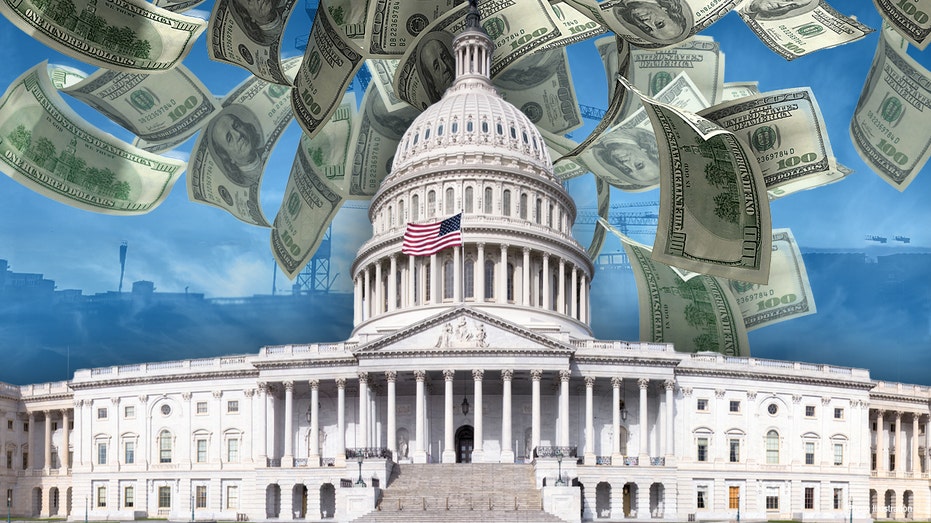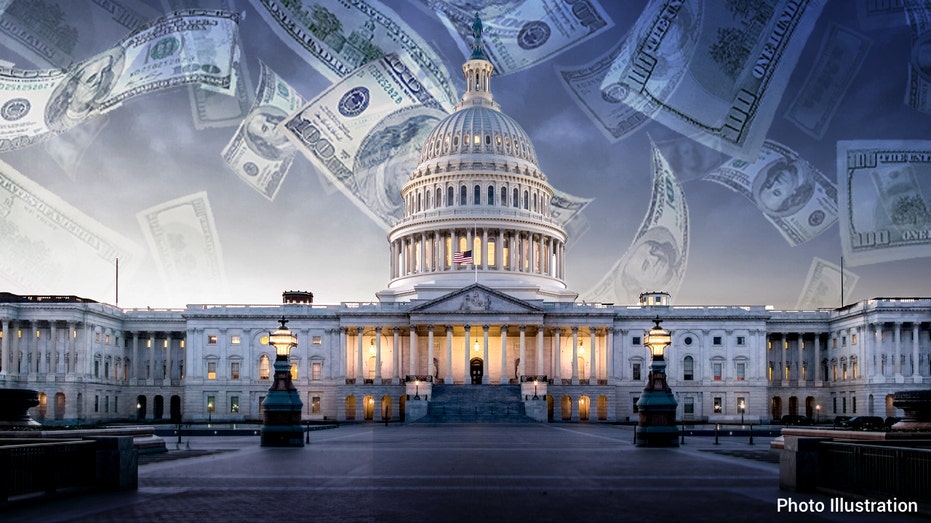Large deficits, high interest rates making federal debt less sustainable
Federal budget deficits and high interest rates are causing interest payments on the $33 trillion national debt to soar, making the debt less sustainable
We have the largest deficit in a non-crisis economy: Thomas Philipson
Thomas Philipson, the former acting chair of the White House council of economic advisers, discusses the Biden administration's handling of the economy on 'The Bottom Line.'
Large budget deficits and high interest rates are making the federal government’s debt burden less sustainable as interest payments pile up.
The federal government is fresh off recording a $1.7 trillion deficit in fiscal year 2023, which concluded at the end of September, which makes it the third-largest deficit in U.S. history — trailing only the $3.1 trillion FY2020 deficit and the $2.7 trillion FY2021 that were incurred at the peak of spending on pandemic era relief programs. Last year’s budget deficit was also over $300 billion larger than the FY2022 deficit.
Interest rates have risen to the highest levels in 22 years due to the Federal Reserve’s inflation fight, which has, in turn, caused the cost of servicing the more than $33 trillion national debt to soar. The federal government spent $659 billion on interest payments in FY2023, over $200 billion more than the Congressional Budget Office (CBO) estimated for FY2023 in projections released in May 2022.
CONGRESS CONSIDERS BIPARTISAN FISCAL COMMISSION TO ADDRESS NATIONAL DEBT, DEFICITS

The federal government spent over $659 billion paying interest on the more than $33 trillion national debt in FY2023. (iStock / iStock)
"These recent changes and trends in economic conditions has brought the question of debt sustainability back to the forefront of several policy debates," a report released Monday by the nonpartisan Congressional Research Service (CRS) noted.
"Of particular concern is that the new interest rate environment could accelerate the timeline for reaching a ‘tipping point’ where GDP growth is persistently and adversely affected or a default on the debt (a scenario in which the government would not be able to fully pay lenders) becomes imminent."
The CRS report explained that although it’s unclear at what point America’s national debt burden would become unsustainable, it’s within the range of more pessimistic estimates based on current CBO projections with the debt on a trajectory to grow.
US FEDERAL BUDGET DEFICIT PROJECTED TO DOUBLE THIS YEAR

The federal government ran its third-largest budget deficit last year, which at $1.7 trillion was the largest outside FY2020 and FY2021 during the height of spending on pandemic relief programs. (Fox News / Fox News)
"There is not a consensus among economists about if or at what level a ‘tipping point’ at which debt becomes unsustainable, but some estimates range from debt-to-GDP ratios of 80% to 200% and beyond," the CRS wrote. "For context, the Congressional Budget Office currently projects the publicly held debt-to-GDP ratio to reach 100.4% in FY2024 and 180.6% by FY2053."
"Recent research into this topic generally points to the current projected path of fiscal policy and publicly held debt to be eventually unsustainable absent policy action or a change in economic conditions," the CRS noted.
US NATIONAL DEBT HITS $33T FOR FIRST TIME IN HISTORY

Committee for a Responsible Federal Budget president Maya MacGuineas told FOX Business that the cost of servicing the national debt has eclipsed certain social programs and is expected to surpass the defense budget. (istock / iStock)
Maya MacGuineas, president of the nonpartisan Committee for a Responsible Federal Budget (CRFB), told FOX Business that the cost of servicing the national debt has eclipsed some federal social programs and is on track to surpass the defense budget in the next few years.
"Interest on the national debt is the fastest growing part of the budget, totaling more than $650 billion in fiscal year 2023 alone," MacGuineas said.
"We already spend more on interest than we spend on children or Medicaid, and in just three years we’ll spend more on interest payments than we do on national defense," she explained. "And that’s absent higher rates than projected — for every 1 percentage point increase in rates above projections, deficits will be $2.7 trillion higher over the next decade than projected."
GET FOX BUSINESS ON THE GO BY CLICKING HERE
"Luckily, lawmakers are starting to hear the alarm bells and take this issue seriously — in 2023, we’ll have reduced projected 10-year debt by $1.3 trillion," MacGuineas said. "But much more needs to be done to get our fiscal situation under control and ensure our debt is sustainable."




















